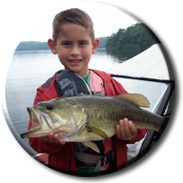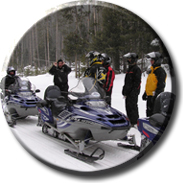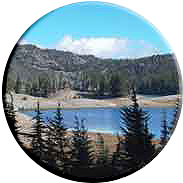|
| Select Projects:
Resource-Based Recreation Studies
- Niobrara National Scenic River Visitor Study.
National Park Service
Dr. Mae Davenport conducted qualitative content analysis on the motives, perceptions, and natural resource values of visitors for use in development of the General Management Plan. A total of 923 visitors in 422 groups were contacted and interviewed on-site. Indicators of recreational experience quality were examined and perceptions of crowding identified. Comparative analysis on values that visitors assign to the Wilderness Area and values they assign to the rest of the National Scenic River was conducted using a questionnaire administered to 556 visitors just outside the Wilderness Area. Prepared and presented final report.
- Socioeconomic Analysis and Recreational Facilities Assessment.
Douglas County, Washington
Active and passive regional recreation facilities throughout Douglas County are provided by a mix of federal, state and local agencies. In coordination with several regional land use and transportation projects, Resource Dimensions conducted community socio-demographic assessments and socioeconomic analyses to evaluate available recreation opportunities and determine the potential for new resources. Active regional recreational facilities provided by these agencies are typically associated with the Columbia River and its surrounding natural resource amenities. Our evaluation included day use and camping facilities, and passive regional recreational activities as hiking, hunting, fishing, nature watching and photography.
 Evaluation of the Pennsylvania 4-H Sportfishing Program.
Pennsylvania Fish & Boat Commission Evaluation of the Pennsylvania 4-H Sportfishing Program.
Pennsylvania Fish & Boat Commission
Resource Dimensions evaluated the sportfishing program in terms of its usefulness and viability as a curriculum to provide children with the opportunity and ability to become anglers, regardless of location or socioeconomic constraints. In selected counties, short surveys and focus groups were administered to Pennsylvanian youth, ages 10-12 in both rural and urban 4-H settings. Preliminary findings indicate that parental attitude towards fishing and social inclusion of youth is an important influence on a child's experience and attitude towards fishing. Quantitative and qualitative methods were employed. Data was gathered using varied survey formats, including questionnaires, focus groups, and surveys.
- Alaska Habitat Guides Project: Economic Overview of Fish and Wildlife Use.
Alaska Department of Fish and Game.
Ginny Fay conducted a comprehensive analysis and prepared report on the economic role of commercial fishing, sportfishing, hunting, subsistence, and non-consumptive use of fish and wildlife in the Alaskan economy. Other major projects included development of an entry limitation program and regulations and fiscal modeling of Alaska commercial fisheries.
- Yellowstone National Park Winter Visitor Analysis: An exploration of the nature of recreation experiences and perceptions of management change.
National Park Service
Winter recreation use in Yellowstone National Park (YNP) was examined to assist Park managers in their decision making about winter visitation. The Resource Dimensions Team undertook a holistic approach to investigating the social impacts of winter recreation and snowmobile use in YNP to evaluate winter visitor characteristics, motivations, satisfaction, and support for a range of management actions, as well as to evaluate visitor travel dynamics. Resource Dimensions developed an interview guide, conducted interviews, review of transcripts, coding, and qualitative content analysis to examine meanings ascribed to recreational activities, experiences, and setting characteristics and identify factors shaping visitors’ attitudes toward management decisions. Data were collected in mail-back questionnaires, on-site surveys, and hourly oversnow vehicle counts. This project was also instrumental in guiding development of the winter use plans for Grand Teton National Park and the
John D. Rockefeller, Jr. Memorial Parkway.
 Snowmobiling in National Parks: An Investigation of the Meanings of Snowmobiling Experiences in Yellowstone.
National Park Service Snowmobiling in National Parks: An Investigation of the Meanings of Snowmobiling Experiences in Yellowstone.
National Park Service
Mae Davenport conducted qualitative content analysis on the motives, perceptions, and natural resource values of visitors for use in development of the General Management Plan. A total of 923 visitors in 422 groups were contacted and interviewed onsite. Indicators of quality recreational experiences were examined and perceptions of crowding identified. Comparative analysis on values that visitors assign to the Wilderness Area and values they assign to the rest of the National Scenic River was conducted using a questionnaire administered to 556 visitors just outside the Wilderness Area. Prepared and presented final report.
- Jefferson National Forest Visitor Realignment Project and Resource Management Plan Update EIS.
USDA Forest Service.
Dr. Erin Seekamp led development of the public involvement process which included conducting visitor survey and stakeholder interviews in connection with plan revisions and updates. The project sought to fully integrate public participation into the forest planning process, recognizing that it is for the public, as well as for the resources on national forest lands that plans are developed and implemented. Interviews identified public perceptions of environmental quality relative to Jefferson National Forest lands. Interview data was transcribed, coded, and analyzed using QSR*NUDIST, a program similar to Ethnograph and designed to aid in analysis of complex qualitative data.
- Recreation and Tourism Analysis Lower Snake Juvenile Salmon Migration Feasibility Study and EIS.
US Army Corps of Engineers
Dr. Chuck Harris lead a multidisciplinary team in developing the research approach and survey design, and in conducting data collection, regional research, socioeconomic analyses, coding, qualitative analysis and evaluation of the recreation and tourism impacts related to the Lower Snake River and a proposed salmon migration feasibility study. Various NEPA-compliant reports were also prepared.
- Denali National Park and Preserve Community Transportation Plan.
National Park Service
Working with Park Staff and a transportation consultant, Ginny Fay assisted in the design of a community transportation system to improve transportation and shuttle bus service for visitors to Denali National Park. The project sought to both provide a lower cost and more efficient system for businesses serving Denali visitors, and to improve transportation options for seasonal employees in the Denali area.
- Linking Heritage Landscapes and Ecosystem Management Mount Hood National Forest.
USDA Forest Service.
Dr. Grace Wang analyzed the integration of ecosystem management and heritage management, especially with regard to American Indians in Mount Hood National Forest. Four fundamental principles of ecosystem management were used to guide the heritage resources management process including use of an ecological perspective, forming partnerships, promoting grass-roots participation, and using scientific knowledge learned over the course of the project. A technical report was prepared for the Mount Hood National Forest, Zig Zag Ranger District.
|
|
Natural Resource Management
- Water Rights Transfer - Resource Planning and Operating Agreement.
Crowley Ranch, Colorado
Resource Dimensions completed water resources planning and an associated operating agreement to support the transfer of water rights from developers to several private landowners and a homeowners association. The operating agreement served as a formal agreement that describes how the irrigation ponds and ditches are to be operated, how much water the users are entitled to, how the system is to be maintained and how related costs are to be allocated. The agreement ensures that the rights of all users are protected now and in the future. Additional objectives were to ensure that water rights are consistently put to beneficial use in order to support owner objectives and defend their future use; and to protect water quality, wildlife and other natural resources.
 Attitudes and Changes in Attitudes about Visitor Management at the Green Lakes/South Sister Area of the Three Sisters Wilderness.
USDA Forest Service Attitudes and Changes in Attitudes about Visitor Management at the Green Lakes/South Sister Area of the Three Sisters Wilderness.
USDA Forest Service
In this project for the USFS Aldo Leopold Wilderness Research Institute, Erin Seekamp investigated the influences of participatory public involvement processes on individuals' judgments about the management of the highly-used wilderness area. Stakeholder involvement meetings were conducted in four communities within a two hour drive of the Three Sisters Wilderness. Meetings were designed to provide participants with technical information (i.e., wilderness policy, demographic trends and recent visitor study data), and then to guide them through value-focused, tradeoff deliberations. Attitudes about the management of the area were tested with a repeated measure questionnaire that assessed pre-meeting judgments, post-treatment judgments and post-deliberation judgments. Results indicated that attitude change is idiosyncratic and that participants, even those highly vested in wilderness management, make more informed and well-considered judgments.
- Biological Resources Management Plan.
U.S. Department of Energy
The objectives of this DOE project were to facilitate and ensure compliance with regulations, reduce risk to mission and operations, and meet the agency's responsibilities as a natural resources trustee. Resource Dimensions’ principal and senior planner Carey Bare was a key member of the team that developed the comprehensive Biological Resources Management Plan. A prominent plan component was a GIS-based biological values analysis of the 45 square mile site and an associated map of relative potential adverse impacts of future development. These tools aided the planning process in providing better information and quantification of development-related environmental impacts and helped to define methods to minimize impacts and support the NEPA process.
- Washington State Grazing Lands Program: Beneficiary performance analysis and incorporated ecosystem services assessment.
Washington State Joint Legislative Review and Audit Committee (JLARC).
This performance assessment of the Washington State Department of Natural Resources (DNR) grazing lands program evaluated program performance relative to net proceeds distributed to trust beneficiaries. The DNR is responsible for managing about 5-million acres of public lands in the state, 2-million acres of forest lands, and about 1-million acres of agricultural and grazing lands. These lands are managed for multiple uses, and generate income to support school construction, colleges, counties, state institutions and other beneficiaries. Budgets were developed for grazing operations in primary DNR grazing regions to estimate economic impacts to ranching operations and likely impacts on funds generated. In addition, an input/output analysis was conducted to estimate likely regional and state-wide economic impacts of the status quo against three possible alternative scenarios. Data collection and on-site investigation took place through field
interviews conducted with ranchers, DNR land managers, appraisers, and real estate agents specializing in ranch and agricultural properties. In addition, county assessors and/or appraisers in counties with State grazing lands were interviewed to assist in the development and validation of an estimated average fair market value for the lands under study. An interactive cost benefit analysis model was developed to estimate impacts of future program alternatives. The DNR is currently using the model to aid in planning efforts for State grazing lands. The analysis also included a preliminarily valuation of certain ecosystem services and other non-market goods and services provided by State grazing lands that may affect beneficiary distributions and associated communities under future program alternatives (e.g. recreation, resource stewardship, conservation, habitat restoration, invasive species control, illegal activities and trespassing, wildfire control, job creation, etc.).
- Environmental Planning Decision-Support Tool - Los Alamos National Laboratory.
Department of Energy
Resource Dimensions developed a decision-support tool to improve site planning. Many planning decisions were made on a project-by-project basis which resulted in unexpected project delays and added costs. The 2008 Site-wide EIS Mitigation Action Plan recognized this and required the preparation of a comprehensive analysis of development constraints to minimize environmental impacts from LANL operations and streamline regulatory compliance. Additionally, 10 CFR 770 requires that suitable excess real property annually be made available to interested entities for economic development. Meeting these requirements was accomplished through a GIS-based tool which considers mission requirements, resource protection, and operational needs for safety, security, and infrastructure. It provides an objective, semi-quantitative method for evaluating opportunities and constraints in order to identify areas best suited for future development, conservation,
or transfer for economic development purposes.
 |
 Attitudes and Changes in Attitudes about Visitor Management at the Green Lakes/South Sister Area of the Three Sisters Wilderness.
USDA Forest Service
Attitudes and Changes in Attitudes about Visitor Management at the Green Lakes/South Sister Area of the Three Sisters Wilderness.
USDA Forest Service


